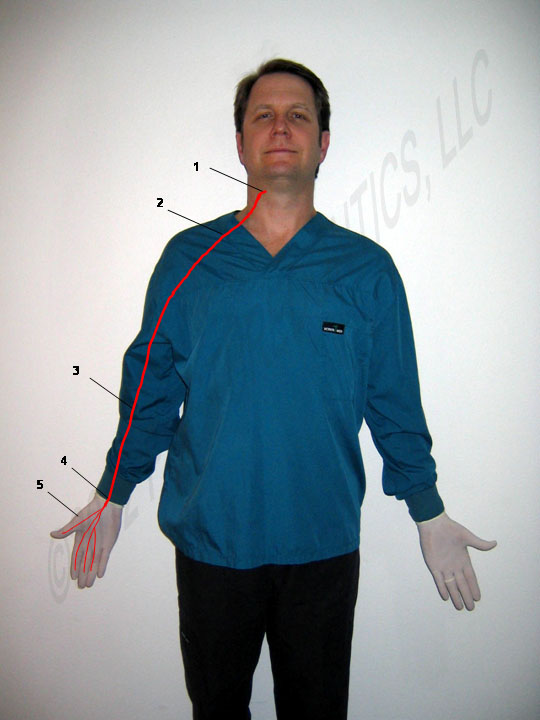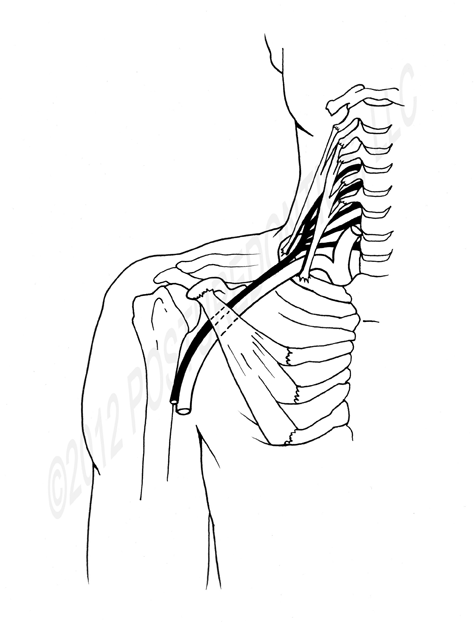Hand pain in the dental practice: When it's not carpal tunnel
Your hands are integral to your work. Because of sustained grips and prolonged awkward postures dental professionals must employ throughout the day, they experience nearly four times the prevalence of hand, wrist and arm pain found in the general public.

Your hands are integral to your work. Because of sustained grips and prolonged awkward postures dental professionals must employ throughout the day, they experience nearly four times the prevalence of hand, wrist and arm pain found in the general public.
Since fewer dental professionals fully recover from hand pain syndromes than they do from pain in the neck, shoulder and elbow, prevention strategies and early attention to warning signs of the primary musculoskeletal disorders (MSDs) of the hand and arm are imperative to your health and career longevity.

The most commonly diagnosed disorder of the hand and wrist among dental professionals is carpal tunnel syndrome (CTS), characterized by pain, numbness and/or tingling into the palm and first three and a half fingers of the hand. However this syndrome is frequently misdiagnosed. There are numerous musculoskeletal problems that mimic CTS, but have a completely different etiology.
More from Bethany Valachi: 4 evidence-based ergonomic strategies that could save your dental career
Cervical radicular pain
Pain or paresthesias in the hand may originate in the cervical spine. Nerve roots that supply the arm and hand may become compressed as they exit the spinal vertebrae, resulting in cervical radiculopathy. Numbness in the hand may be produced by changes in neck position, and muscle stretch reflexes tend to be diminished. A positive test for this condition would be an electrodiagnostic study that would reveal a normal nerve conduction velocity, however the EMG may be abnormal in the distribution of the involved nerve root.
A skilled electromyographer, usually a neurologist or physiatrist, is essential for accurate test results. The cause of cervical radiculopathy, more often than not, is due to forward head posture, combined with degenerative changes in the facet joints of the cervical spine.
Thoracic outlet syndrome
In my opinion, thoracic outlet syndrome (TOS) is one of the most commonly misdiagnosed musculoskeletal disorders in dentistry. To be accurately diagnosed, TOS requires a very specific set of four diagnostic tests (which few PCPs perform), a thorough clinical evaluation and review of daily activities and work habits. Therefore, it is imperative that dental professionals insist on a referral to a physical therapist or certified hand therapist for accurate diagnosis. Thoracic outlet syndrome is a neurovascular disorder resulting from pressure on the nerves and/or blood vessels of the brachial plexus that supply the arm, fingers and hand.
More from Bethany Valachi: 3 ergonomic mistakes that could end your dental career

Tightness and/or trigger points in the pectoralis, anterior or middle scalenes may restrict the size of the thoracic outlet. Compression of this neurovascular bundle may cause numbness and tingling which can mimic CTS. However, TOS may also include vascular symptoms (swelling or discoloration) in the hands and fingers. The development of TOS has no involvement with the tendons and soft tissues at the wrist, but that is where the symptoms tend to be perceived.
Dental professionals may develop thoracic outlet symptoms from forward head posture, rounded shoulders, tight chest muscles, improper exercise and improper body mechanics. Thoracic outlet symptoms from these sources can very often resolve with physical therapy.
Trigger points and nerve entrapment
Although muscle-referred pain is a well-documented and researched phenomenon, it is often overlooked as a possible source of pain syndromes. Trigger points in certain muscles may refer CTS-like symptoms into the hand and wrist. A trigger point is a sustained contraction inside a muscle that feels like a hard knot or a pea. This contraction neither allows the muscle to contract or relax, thereby effectively decreasing flexibility and range of motion. When firm pressure is applied, trigger points often refer pain to another area of the body, or pain may be felt locally. Trigger points tend to develop due to sustained muscular contraction, asymmetrical postures, ischemia and mental stress.
More from Bethany Valachi: Stretching your way out of pain in the dental office
Forearm muscles, such as the pronator teres, can compress the median nerve and cause CTS-like pain in the hand and wrist. Since the median nerve runs through the pronator teres muscle, dental professionals who operate with the forearms in a pronated (palms-down) position are at greater risk for this nerve entrapment.
Neuromuscular technique and myofascial release are two popular approaches that have been used to treat this type of pain. Initially, dental professionals should work with a health-care professional, such as a certified neuromuscular therapist (CNMT) or a therapist who specializes in trigger-point therapy to resolve pain of this origin. After reduction of symptoms, dentists may learn to self-treat their trigger points, since their jobs are a perpetuating factor. The Trigger Point Therapy Workbook is an excellent resource for self-treatment.
Poorly fitted gloves
Improperly fitted gloves may cause CTS-type pain, primarily at the base of the thumb. Ambidextrous gloves are generally molded with the hand in a flat (neutral) position, and were originally designed for brief medical examinations. When used for longer procedures, as in dentistry, the operator’s hand must pull the glove into a working position, which may compress the back of the hand, strain the muscles at the base of the thumb and simultaneously reduce the blood flow to the hand. Ambidextrous gloves exert one-third more force than fitted gloves and may cause muscle ischemia, nerve compression and pain. Tight gloves may also result in the above symptoms.
The cause of hand pain in dental professionals may be multifactorial, and the etiology may not necessarily be related to a single structural problem at the wrist. Regardless of the etiology of hand/wrist pain, dentists should realize that their occupation is a perpetuating factor for the development of this pain. Prevention is of great importance and intervention strategies should become an integral habit in the operatory, the office, as well as at home.
To receive a copy of the Hand and Wrist Pain chapter from Bethany’s book, “Practice Dentistry Pain-Free”, please e-mail Bethany at info@posturedontics.com.